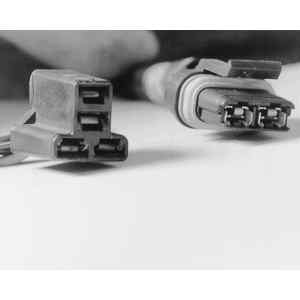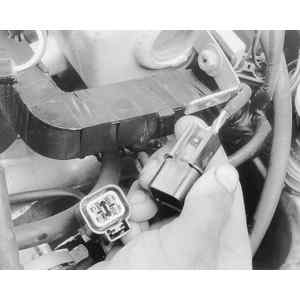Three types of connectors are commonly used in automotive applications-weatherproof,
molded and hard shell.
| Fig. 1: Hard shell (left) and weatherproof (right) connectors
have replaceable terminals

|
- Weatherproof[emdash]these connectors are most commonly used in the engine
compartment or where the connector is exposed to the elements. Terminals are
protected against moisture and dirt by sealing rings which provide a weathertight
seal. All repairs require the use of a special terminal and the tool required
to service it. Unlike standard blade type terminals, these weatherproof terminals
cannot be straightened once they are bent. Make certain that the connectors
are properly seated and all of the sealing rings are in place when connecting
leads.
- Molded[emdash]these connectors require complete replacement of the connector
if found to be defective. This means splicing a new connector assembly into
the harness. All splices should be soldered to insure proper contact. Use
care when probing the connections or replacing terminals in them, as it is
possible to create a short circuit between opposite terminals. If this happens
to the wrong terminal pair, it is possible to damage certain components. Always
use jumper wires between connectors for circuit checking and NEVER probe through
weatherproof seals.
- Hard Shell[emdash]unlike molded connectors, the terminal contacts in hard-shell
connectors can be replaced. Replacement usually involves the use of a special
terminal removal tool that depresses the locking tangs (barbs) on the connector
terminal and allows the connector to be removed from the rear of the shell.
The connector shell should be replaced if it shows any evidence of burning,
melting, cracks, or breaks. Replace individual terminals that are burnt, corroded,
distorted or loose.
| Fig. 2: Weatherproof connectors are most commonly
used in the engine compartment or where the connector is exposed to
the elements

|



